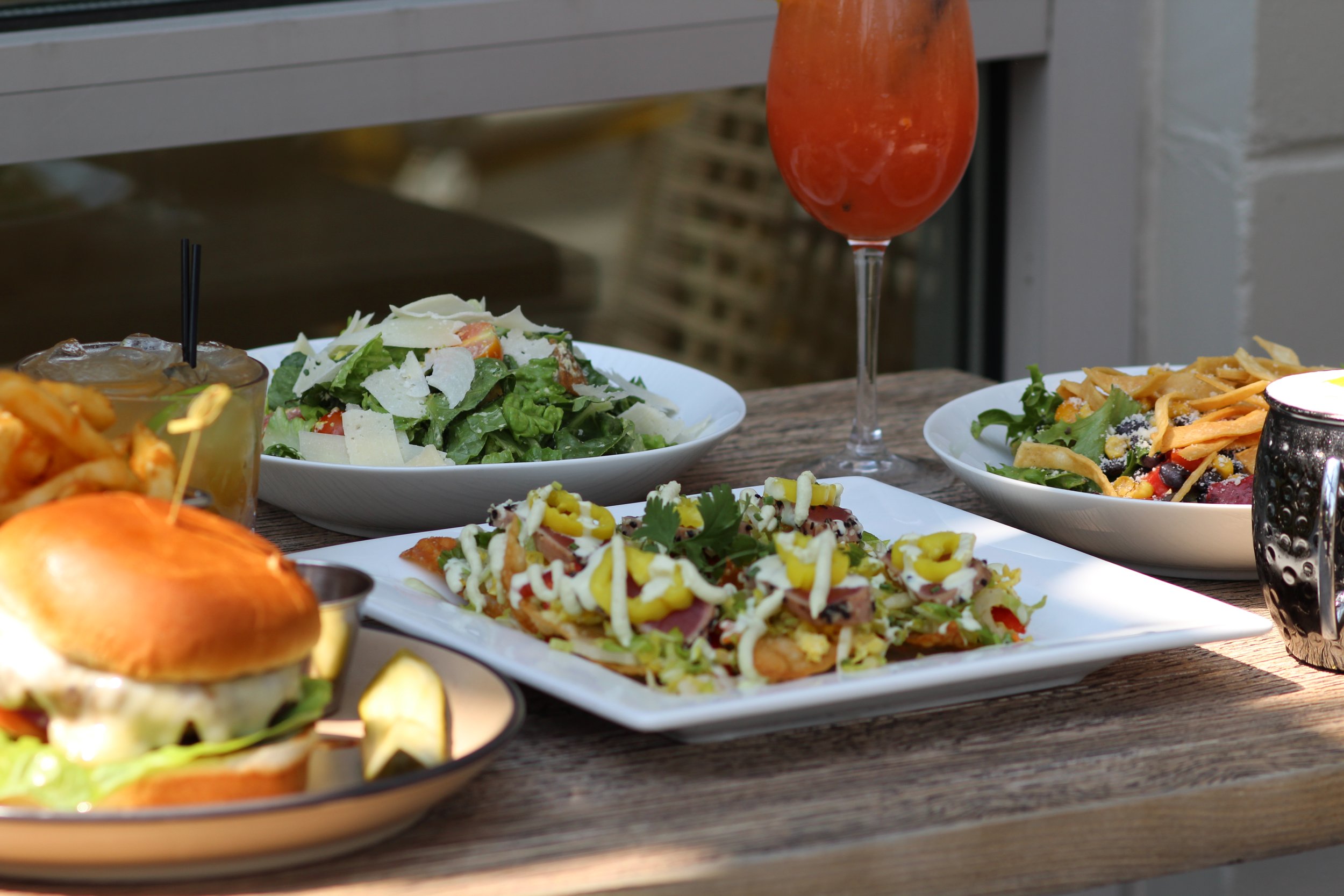Savor Authentic Asian Food With a Pan-Asian Spin for a Cooking Journey
Beginning on a cooking journey through authentic Eastern cuisine, enhanced with a Pan-Asian spin, supplies an one-of-a-kind chance to explore the abundant tapestry of flavors that define the region's diverse cooking practices. As you ponder these luring dishes, take into consideration the social narratives and historic impacts that form them, each bite providing a tale waiting to be uncovered. asian fusion restaurant.

Discovering Pan-Asian Tastes
In the realm of worldwide gastronomy, Pan-Asian cuisine sticks out for its exceptional diversity and the unified interaction of tastes from numerous Eastern societies. This culinary approach commemorates the abundant customs and one-of-a-kind components discovered across the continent, producing a tapestry of tastes that is both interesting and enjoyable. Trick to Pan-Asian food is its capacity to stabilize contrasting flavors-- sweet, salted, spicy, and sour-- while highlighting the freshness and quality of each component.
From the umami-rich soy sauce of Japan to the intense chili peppers of Thailand, Pan-Asian food uses a considerable palette of tastes. These elements are typically integrated in inventive ways, boosting meals with layers of complexity. For example, making use of aromatic natural herbs such as lemongrass and cilantro, usual in Vietnamese and Thai food, includes a refreshing illumination to meals, while the incorporation of coconut milk supplies a luscious, abundant structure.
The emphasis on fresh fruit and vegetables and fragrant spices makes sure that each dish is not only a banquet for the palate however additionally for the senses. Pan-Asian food invites restaurants to begin on a culinary trip, discovering the huge and varied landscapes of Oriental gastronomy with every bite.
Fusion Recipes to Attempt
While Pan-Asian food is commemorated for its conventional tastes, the modern cooking landscape is significantly embracing blend recipes that mix these traditional elements with influences from various other areas. This ingenious method not just honors the rich heritage of Eastern culinary arts but also presents novel preference experiences that attract contemporary palates.
A prime example of such a fusion recipe is the Korean-Mexican taco, where marinaded bulgogi beef is wrapped in a warm tortilla, topped with kimchi and a zesty gochujang-infused salsa. This combination marries the strong, full-flavored flavors of Korea with the lively, fresh elements of Mexican food. Similarly, sushi burritos have gained popularity, integrating the fragile artistry of Japanese sushi with the hearty, hand-held ease of a burrito, typically featuring blend components like tempura shrimp and avocado with a drizzle of wasabi mayo.
One more noteworthy meal is Thai curry ramen, which infuses the velvety, aromatic seasonings of Thai curry right into the soothing brew of conventional Japanese ramen, creating an unified blend that tantalizes the senses. These combination dishes extend beyond mere uniqueness; they represent a culinary dialogue in between societies, encouraging exploration and advancement in the world of Pan-Asian food.
Vital Ingredients and Flavors
To genuinely appreciate Pan-Asian food, one have to comprehend the vital ingredients and spices that create its structure. This diverse culinary style draws from an abundant tapestry of Asian traditions, using a harmonious blend of appearances and tastes.
Aromatic aspects are crucial, with lemongrass, garlic, and ginger being common across different Pan-Asian dishes. These components provide an aromatic base that improves the intricacy of tastes. Seasonings such as star anise, cardamom, and cinnamon introduce heat and personality, resembling impacts from areas like China and India.

Food Preparation Strategies and Tips
Understanding the art of Pan-Asian cuisine calls for familiarity with its distinct cooking strategies, each adding to the dynamic tapestry of tastes this culinary practice is commemorated for. Central to these methods is the stir-fry, a fast cooking strategy that maintains the dietary honesty and vibrant colors of components. Making use of a wok, the stir-fry method permits also heat distribution, necessary for attaining the particular structure and taste equilibrium of Pan-Asian recipes.
An additional essential strategy is steaming, especially common in Chinese food. This gentle method preserves the all-natural tastes and nutrients of ingredients, making it excellent for seafood and veggies. Dumplings, a cherished staple, typically take advantage of steaming, leading to soft, succulent appearances.
Cooking, also essential, presents smoky depths to recipes such as Oriental bulgogi or Japanese yakitori (pan asian dining Islamabad). This technique typically includes marinading components, allowing tastes to pass through deeply before food preparation over an open flame or warm plate
Lastly, understanding the art of balancing tastes-- wonderful, sour, salted, bitter, and umami-- is crucial. Correctly layering these elements can boost a meal from ordinary to amazing, providing a complicated and satisfying culinary experience that symbolizes the significance of Pan-Asian cuisine.
Eating Experiences Worldwide
Across the globe, Pan-Asian food provides an exceptional dining experience, celebrated for its abundant tapestry of flavors and vivid presentations. This cooking sensation has actually transcended social boundaries, catching the hearts and tastes buds of food enthusiasts worldwide. In multicultural cities like New York, London, and Sydney, Pan-Asian restaurants act as fusions where cooking practices from Thailand, Japan, China, and beyond assemble, supplying restaurants with a diverse mix of meals that highlight the region's variety.
The global allure of Pan-Asian cuisine depends on its ability to provide both authenticity and advancement. Chefs skillfully wed typical ingredients such as lemongrass, soy sauce, and miso with contemporary strategies, resulting in recipes that are both refreshingly new and familiar. This combination permits diners to start a culinary trip that appreciates heritage while accepting modernity.
Additionally, eating experiences look at here now are elevated through attentively developed environments that show the ethos of Pan-Asian appearances. From minimal Japanese-inspired insides to dynamic Thai-themed spaces, each restaurant supplies an one-of-a-kind ambiance that complements the cooking offerings. Because of this, customers are not merely taking in a dish but partaking in a cultural experience, making Pan-Asian dining a genuinely international phenomenon.
Final Thought
The expedition of Pan-Asian cuisine uses a profound understanding of the detailed interaction of tastes and culinary customs throughout Asia. By welcoming blend meals such as Thai curry ramen and sushi pizza mania burritos, the cooking journey not just highlights the versatility of typical components yet also showcases innovative contemporary methods. This gastronomic adventure, enhanced by cooking methods and necessary spices, provides a special chance to value the multiculturalism and cooking artistry that define Pan-Asian food on a global range.
Beginning on a cooking journey with authentic Oriental food, enhanced with a Pan-Asian spin, offers a special opportunity to discover the rich tapestry of tastes that specify the region's varied cooking traditions.In the world of international gastronomy, Pan-Asian food stands out for its remarkable diversity and the harmonious interaction of tastes from numerous Eastern cultures. Secret to Pan-Asian food is its capacity to balance contrasting flavors-- pleasant, salted, spicy, popeyes chicken near me and sour-- while highlighting the freshness and quality of each component.
